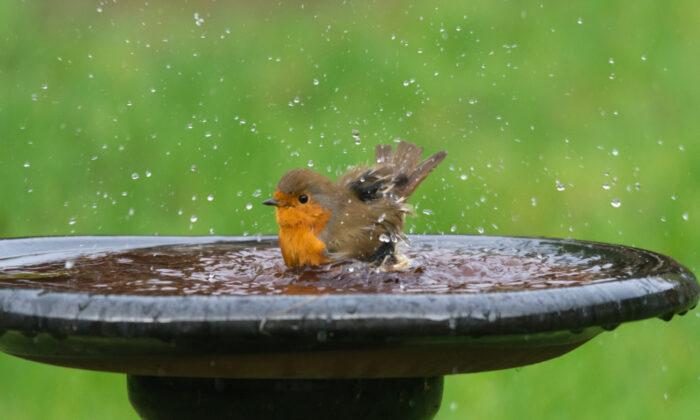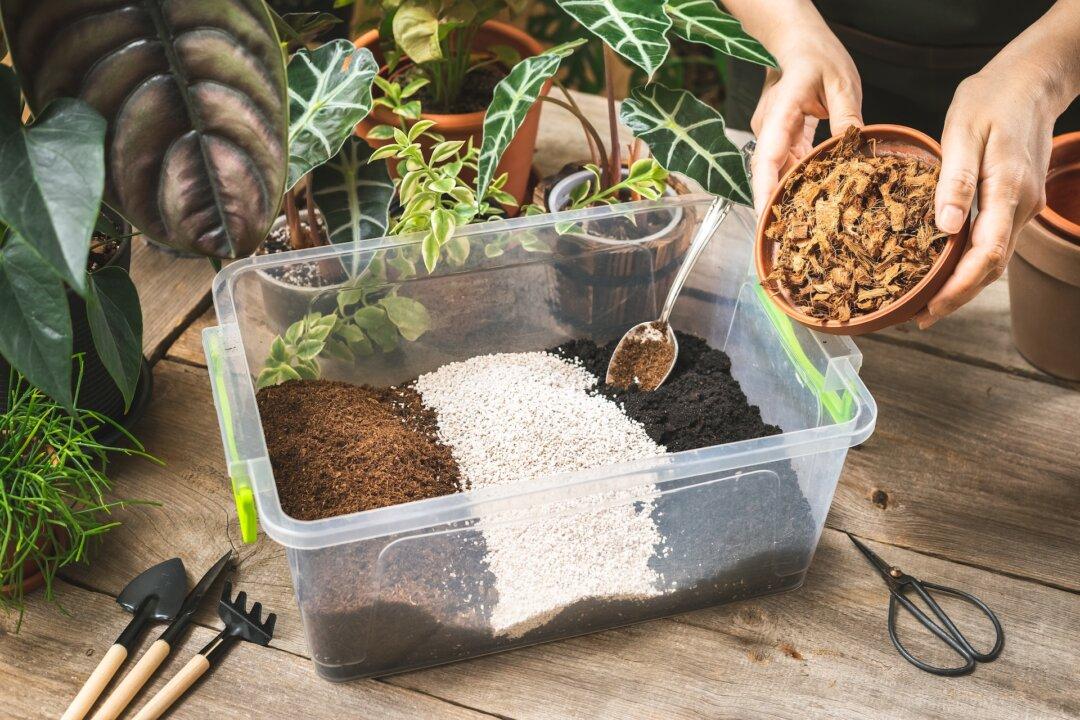Water is one of the best ways to attract birds to your yard. Not every bird will eat seeds at a feeder, but they all need water every day. During the winter, birds will eat snow if the water is frozen in lakes and streams. Many parts of the country have snowless cold spells that keep the daytime temperatures below freezing. If there is no snow to eat, the birds must find a sun-warmed rock that melts a little snow or ice.
When someone mentions a heated birdbath, many people picture the birds sitting in a spa with warm wisps of steam floating above their heads. Thankfully for our electric bills, that is not the case.
Most de-icers are thermostatically controlled, so they do not run the whole time. They turn themselves on when the water is about to freeze and turn off when it is just a little bit warmer than ice—not warm to the touch, just not frozen. They often have another thermostat that turns them off when they come out of water so they do not run continuously and try to warm the air. The thermostat is not set for a high temperature, so if the air temperature is above freezing, the de-icer probably isn’t even on.
You can purchase a birdbath that has the heater built in, or you can use a heater that sits in the bottom of your existing birdbath. If the concrete or ceramic bath is saucer-shaped, you can use a heater. But if the birdbath is flat on the bottom with straight, vertical sides, it can be damaged if the heater is off and the ice freezes.
It is easy to compare electrical energy costs for the various heated birdbaths. Just check your electric bill for how much you pay for a kilowatt-hour. Let’s say the bill says it is 7 cents. A kilowatt is the same thing as 1,000 watts. A birdbath de-icer (or any electrical appliance) that says it uses 200 watts would use 20 percent of 1,000 watts. So, 20 percent of 7 cents is 1.4 cents. So, that birdbath de-icer would cost less than one-and-a-half cents per hour to run if it ran for the whole hour. Some de-icers use as little as 50 watts. They would have to run for about 10 hours to cost a quarter.

Often, the summer birdbath is a focal point in the flower bed. In the winter, there is no need to attract attention to the dormant flowers. There is a need for you to stay warm and not trudge through the snow to fill the bird bath. It is more convenient to have the bath up close to the house. Move the birdbath to a convenient place that allows you to see the birds.
All birds need water to drink and will bathe even when it is very cold out. They coat their feathers with oil from an oil gland near the base of the tail. The oil repels snow and rain and helps keep the feathers dry and fluffy, which keeps the birds warm. Unfortunately, as many of us with oily hair know, oil attracts dirt. Dirty feathers do not repel snow as well as clean feathers, so they must be washed off. After a bath, the birds must re-oil their feathers.
Do not worry about the bird’s bare legs being cold. They have a special design that works very well. The legs and feet are covered in scales made of material similar to fingernails. The single blood vessel going out to the toes lies next to the blood vessel coming back in to the body. The one going out gets cooled off so that it does not waste heat on the toes, and the one coming in gets warmed up so that it does not cool down the body. There aren’t even muscles out there, just tendons and ligaments that do not need much warmth or blood.
The best and easiest way to attract wildlife to your yard in the winter is by providing all three aspects of an animal’s habitat: water, food, and shelter from the weather.





